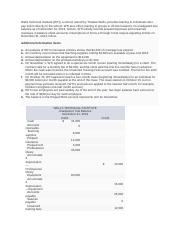Content

Finally, a strong fiscal position, like a budget surplus, can be the result of sustained economic growth. If the government is forced to increase taxation and decrease public expenditure to achieve a budget surplus, low levels of economic growth may occur due to the policy’s effects of suppressing aggregate demand. There are 12 separate appropriation bills that are supposed to be shepherded annually through Congress by the appropriations committees. Defense spending represents more than half of all discretionary spending. And displays the difference in growth between debt held by the public and intragovernmental debt.
They are deducted from the Government-wide totals for budget authority and outlays. Laws that would increase mandatory spending or decrease receipts are constrained through “pay-as-you-go” rules. Under these rules, the cumulative effects of legislation affecting mandatory spending or receipts must not increase the deficit. Legislated increases in benefit payments, for example, have to be offset by legislated reductions in other mandatory spending or increases in receipts. Following the end of a session of Types of government budget: What are the three types of government budgets? Congress, OMB estimates the net effect on the deficit of laws enacted since the BEA was passed that affect mandatory spending and receipts. If there is an estimated net increase in the deficit for the current fiscal year and the budget year combined, the BEA specifies sequester procedures for the uniform reduction of most non-exempt mandatory spending programs. Only 3 percent of all mandatory spending is sequesterable by either uniform reduction or special rule; the rest is exempt from sequester by law.
Government Borrowings
These programs range from transportation, education, housing, and social service programs, as well as science and environmental organizations. When a direct or guaranteed loan is disbursed, the program account makes a payment equal to the cost, which is recorded as an outlay, to a non-budgetary credit financing account. For a few programs, the computed cost is negative for a portion or all of the direct loans and loan guarantees. In such cases, the financing account makes a payment to a special fund receipt account established for the program, where it is recorded as an offsetting receipt.
For example, the Legislature may provide a lump-sum appropriation to OFM for allocation to agencies on an as-needed basis, or according to specified criteria. An activity is something an organization does https://online-accounting.net/ to accomplish its goals and objectives. An activity consumes resources and produces a product, service or result. One way to define activities is to consider how agency employees describe their jobs.
Budget Surplus
LEED™ is a green building certification program that recognizes best-in-class building strategies and practices. Leases are contracts entered into by the state which provide for the use and purchase of real or personal property, and provide for payment by the state through the operating budget. All financing contracts must be approved by the state Finance Committee. A lease must have the approval of OFM if it is for space under development or has an obligation of over $1 million annually, regardless of the length of the lease obligation. Equipment, software, services, and products used in processing information, office automation, and telecommunications (voice, data and/or video). A legal term referring to anything erected on and affixed to land (e.g., buildings, roads, fences, and services), which legally becomes part of the land, according to common law and statutory definition.
The portion of expenditure authority not expected to be used because of circumstances such as the Governor’s across-the-board allotment reductions, technical corrections, or proviso compliance. Unless otherwise qualified, cash received during a fiscal year irrespective of when the monies are earned. Real property includes land, structures affixed to the land, property affixed to the structures, and in some cases, trees etc., growing on the land. Projects that maintain and preserve existing state facilities and assets, and do not significantly change the program use of a facility.
